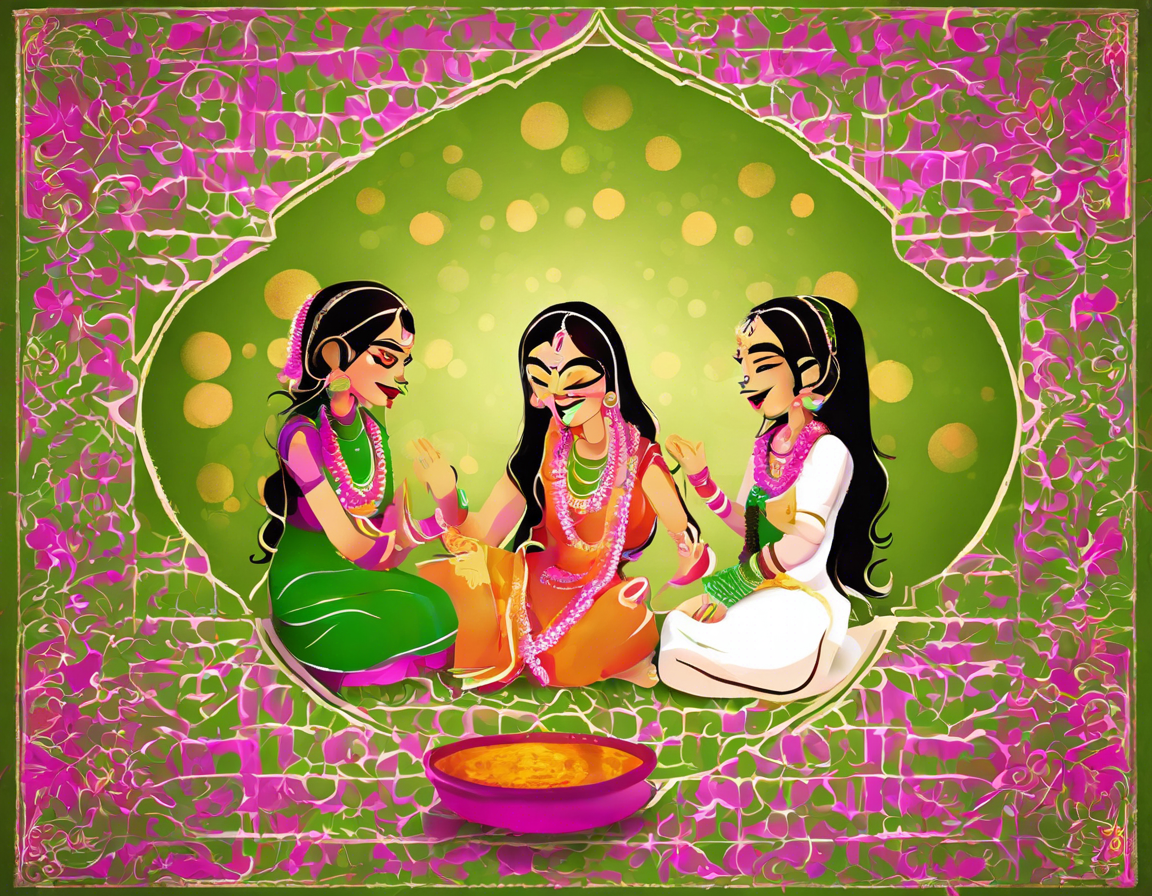Introduction
Hariyali Teej, also known as Sindhara Teej or Choti Teej, is a significant festival celebrated by married and unmarried women in various parts of India, especially in the states of Rajasthan, Uttar Pradesh, Bihar, Madhya Pradesh, and Haryana. This festival falls on the third day of the bright half of the North Indian lunar month of Shravana, usually in July or August. The term “Hariyali” refers to the lush greenery and vitality of the monsoon season, symbolizing love and fertility.
Significance of Hariyali Teej
Hariyali Teej holds immense significance in Hindu culture, as it celebrates the reunion of Lord Shiva and Goddess Parvati. It is believed that on this day, Goddess Parvati was united with Lord Shiva after a long penance. Married women observe fasts and pray for the well-being of their husbands and marital bliss, while unmarried women seek the blessing of the divine couple for an ideal spouse.
Rituals and Traditions
The celebrations of Hariyali Teej involve various rituals and customs that highlight the essence of love, devotion, and fertility:
-
Fasting and Prayer: Women observe a day-long fast without consuming food or water. They offer prayers to Lord Shiva and Goddess Parvati for a prosperous and harmonious married life.
-
Swings and Songs: Women dress in vibrant attire, apply henna (mehndi) on their hands, and swing on decorated swings, singing traditional folk songs known as “Teej songs” that narrate the tales of love and marital joy.
-
Feasting: After breaking their fast at the designated auspicious time, women indulge in a sumptuous feast comprising traditional sweets and delicacies like ghewar, malpua, and kheer.
-
Gift Exchange: On Hariyali Teej, married women receive gifts or “sindhara” from their in-laws, which typically include traditional clothes, jewelry, and sweets. Unmarried women also receive blessings and gifts from their parents.
-
Green Symbolism: Green is the predominant color associated with Hariyali Teej, symbolizing the fresh harvest, growth, and fertility. Women adorn themselves in green attire, wear green bangles and apply green mehndi as a mark of prosperity and well-being.
-
Pooja and Processions: Many temples organize special pujas dedicated to Lord Shiva and Goddess Parvati on this day. Processions, folk dances, and other cultural activities are also organized to mark the festive spirit.
Celebrating Love and Fertility
Hariyali Teej serves as a cultural embodiment of love, fertility, and devotion. It symbolizes the bond between husband and wife, as well as the eternal love between Lord Shiva and Goddess Parvati. The festival underscores the essential values of commitment, understanding, and mutual respect in a marital relationship. By observing fasts, performing rituals, and partaking in communal celebrations, women seek blessings for a blessed union and a prosperous family life.
FAQs
- What is the significance of applying mehndi on Hariyali Teej?
-
Applying mehndi is considered auspicious on Hariyali Teej as it symbolizes the celebration of love and fertility. Women adorn their hands with intricate mehndi designs to enhance the festive spirit.
-
Why is green the prominent color of Hariyali Teej?
-
Green signifies growth, prosperity, and fertility. As Hariyali Teej falls during the monsoon season when nature is lush and vibrant, the color green is associated with vitality and renewal.
-
Can unmarried women observe fasts on Hariyali Teej?
-
Yes, unmarried women can observe fasts on Hariyali Teej to seek the blessings of Lord Shiva and Goddess Parvati for finding an ideal life partner and a happy married life in the future.
-
What are some traditional dishes prepared for Hariyali Teej?
-
Traditional dishes prepared for Hariyali Teej include ghewar (a sweet cake), malpua (pancakes), kheer (rice pudding), and various other sweets and savories enjoyed during the festive occasion.
-
How do married women celebrate Hariyali Teej with their in-laws?
-
Married women receive gifts or sindhara from their in-laws, which typically consist of traditional clothes, jewelry, and sweets. They also participate in family rituals, prayers, and feasting to mark the festive celebration.
-
Are there specific Teej songs sung during Hariyali Teej?
-
Yes, Teej songs are an essential part of Hariyali Teej celebrations. These folk songs narrate tales of love, marital bliss, and the divine union of Lord Shiva and Goddess Parvati, adding melodious charm to the festive atmosphere.
-
Are there any regional variations in the way Hariyali Teej is celebrated across India?
-
Yes, different regions in India may have varying customs and traditions associated with Hariyali Teej. For example, in Rajasthan, traditional processions with idols of deities are carried out, while in Uttar Pradesh, swings are an integral part of the celebrations.
-
How can one participate in Hariyali Teej celebrations if not from a Hindu background?
- While Hariyali Teej is predominantly a Hindu festival, people from diverse backgrounds can partake in the festivities by learning about the rituals, customs, and significance of the occasion. Attending cultural events or visiting temples during Hariyali Teej can offer insights into the rich tapestry of Indian traditions.
Conclusion
In essence, Hariyali Teej is a joyous occasion that reverberates with the themes of love, fertility, and devotion. Through fasting, praying, singing, and feasting, women celebrate the divine union of Lord Shiva and Goddess Parvati, seeking blessings for marital bliss and prosperity. The festival not only exemplifies the cultural vibrancy of India but also emphasizes the enduring values of love, commitment, and togetherness that form the cornerstone of harmonious relationships.
